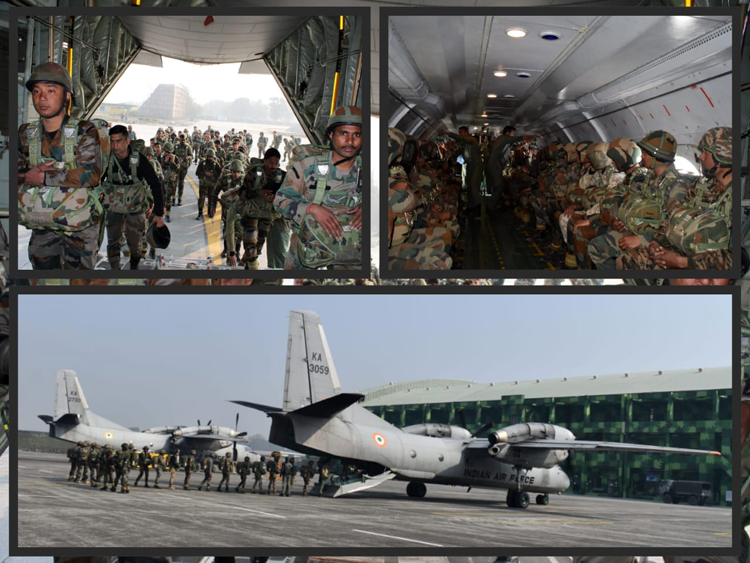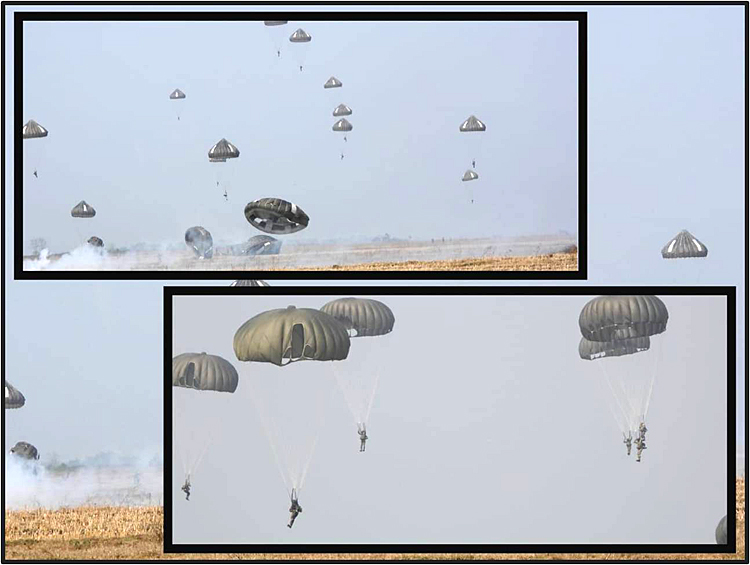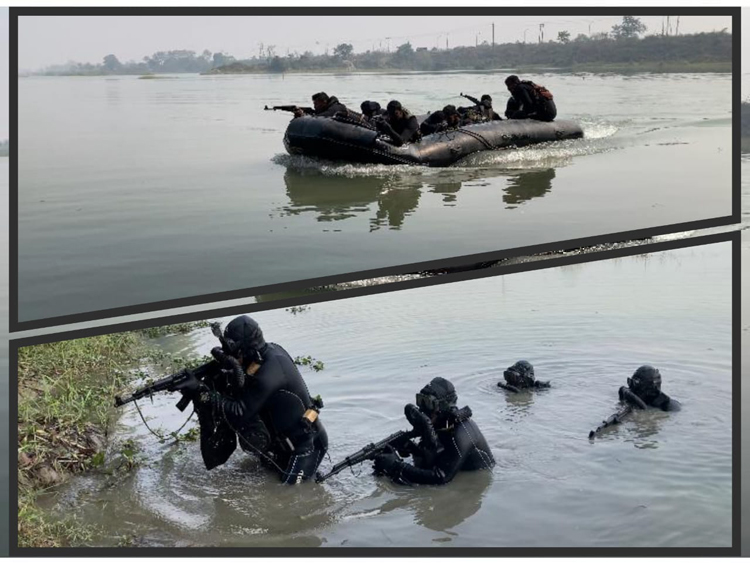INDIAN ARMED FORCES CHIEFS ON OUR RELENTLESS AND FOCUSED PUBLISHING EFFORTS

The insightful articles, inspiring narrations and analytical perspectives presented by the Editorial Team, establish an alluring connect with the reader. My compliments and best wishes to SP Guide Publications.

"Over the past 60 years, the growth of SP Guide Publications has mirrored the rising stature of Indian Navy. Its well-researched and informative magazines on Defence and Aerospace sector have served to shape an educated opinion of our military personnel, policy makers and the public alike. I wish SP's Publication team continued success, fair winds and following seas in all future endeavour!"

Since, its inception in 1964, SP Guide Publications has consistently demonstrated commitment to high-quality journalism in the aerospace and defence sectors, earning a well-deserved reputation as Asia's largest media house in this domain. I wish SP Guide Publications continued success in its pursuit of excellence.
- MoD initiates comprehensive review of Defence Acquisition Procedure 2020, pushes for defence reforms
- G7: The Swansong
- Kalinga Connect: South Asia to Polynesia
- Must Credit DRDO for Operation Sindoor, now what is next for defence R&D?
- The layered Air Defence systems that worked superbly, the key element of Operation Sindoor
- Operation Sindoor | Day 2 DGMOs Briefing
- Operation Sindoor: Resolute yet Restrained
Exercise Devil Strike
From the aerial induction of troops to the successful link-up with advancing ground forces, Exercise 'Devil Strike' highlights the strategic significance and the evolving role of airborne forces in safeguarding national security interests
 |
The Author is Former Director General of Information Systems and A Special Forces Veteran, Indian Army |

Airborne Exercise 'Devil Strike' was conducted close to the Chicken Neck area of North Bengal from January 22-27, 2024. Paratroopers are also called Red Devils, from which the name of the exercise was possibly derived. Interestingly, an Emergency Deployment Readiness Exercise of the same name, Exercise 'Devil Strike', was also conducted in the US during July 2016, in which more than 700 paratroopers from the 82nd Airborne Division airdropped into Polk Field, LA, with C-17 Globemasters and C-130 Hercules aircraft participating.
Chicken Neck is a strategic area in the narrow Siliguri Corridor that links Northeast India. Beijing illegally claims the entire state of Arunachal Pradesh as Chinese territory. China has made intrusions in Bhutan, established military villages on Bhutanese territory and claims the Doklam Plateau in order to deploy Chinese troops on the Jhampari Ridge overlooking the Siliguri Corridor. China is also constructing an expressway to Nepal for offensive purposes. When the pro-China BNP was ruling Bangladesh, the Bangladesh army was practicing 'cold start' to invest in the Siliguri Corridor and marry up with terrorist organisations, with the possibility of China's Peoples' Liberation Army (PLA) invading and linking up from the north.
The successful Exercise 'Devil Strike' underscores the growing capabilities of the Indian Army and the Indian Air Force, demonstrating their combined ability to operate effectively in complex battlefield scenarios
Exercise 'Devil Strike' in January 2024, was a large-scale airborne exercise conducted jointly by the Indian Army and the Indian Air Force (IAF). Over 1,000 paratroopers from the Army's Eastern Command, along with Garud commandos of the Air Force took part in the exercise. The air element included Rafale fighter jets, C-130J Super Hercules aircraft, AN-32 transport aircraft and the indigenous Advance Light Helicopter (ALH) helicopters – Dhruv helicopters of the Indian Army.

The exercise was conducted in an intense electronic warfare setting – the challenge being disruption and to bring realism and simulate the 21st century battlefield modern era – disrupting navigation and communication systems as the enemy would do. The difficulties in such an intense electronic environment needs to be viewed in the case of airborne drops where airdrop from a single AN-32 aircraft implies that the paratroopers touching ground would be spread over one km or more. Getting the force together in hours of darkness and proceeding to the objective for the task allotted in a setting of disrupted communications is not an easy task. It requires plenty of training and coordinated rehearsals.
The exercise covered a wide range of critical maneuvers, including:
- Aerial induction of troops and heavy weapons: demonstrating the ability to quickly deploy forces behind enemy lines.
- Logistics re-supply to ensure sustained operations even in remote locations.
- Destruction of high value targets simulating precision strikes against critical enemy infrastructure.
- Successful link-up with advancing ground forces, highlighting the importance of coordinated operations between airborne and ground troops.
- Exfiltration operation, practicing the safe extrication of forces from the contested area.
Exercise 'Devil Strike' was designed to meticulously practice the entire spectrum of operations an airborne force may encounter. Utmost secrecy was maintained in the exercise; from the planning to the briefing of the force, induction of pathfinders, airborne drop of the main force to tackling the targets, link-up with ground forces and throughout the exfiltration. The Rafale fighter jets provided air support to the stream transport aircraft carrying the paratroopers, as well as close combat support. The C-130J Super Hercules aircraft served as the workhorse for troop and equipment transport. The AN-32 transport aircraft provided additional troop airlift capability and the ALH Dhruv helicopters facilitated troop insertion for rapid movement on ground.
The successful Exercise 'Devil Strike' underscores the growing capabilities of the Indian Army and the Indian Air Force; demonstrating their combined ability to work seamlessly together, employ cutting edge technology and effectively operate in complex battlefield scenarios. The main advantage of airborne forces is their ability to be deployed into combat zones without land passage, as long as the airspace is accessible.
Airborne forces can be employed anywhere in the theatre of war, attacking deep to achieve operational-level objectives and destabilise the enemy with little warning
Airborne Forces are 'threat in being' and simply alerting airborne forces conveys political signal at the strategic level. Strategic missions may require airborne forces to seize an airhead from which follow-on ground or air operations can be launched. Given their strategic mobility, they can move from distant bases to strike at important targets deep in enemy-held territory with little warning.
At the operational level, airborne forces can seize objectives like airfields, bridges, passes or other key terrain deep in the enemy's rear areas, linked to the operational-level commander's concept, simplifying the accomplishment of his assigned tasks. Such operations are usually short and require a linkup by ground forces. The advantage is that airborne forces can be employed anywhere in the theatre of war. They attack deep to achieve operational level objectives. At the tactical level, airborne force assault in the rear or to the flank of the enemy with little warning can destabilise the enemy.

At the same time, effective suppression of enemy air defence and electronic warfare is vital in modern war for the safety of transport aircraft and helicopters. According to Dutch analysts, Russians have lost about 100 of their pre-war force of 800 or so attack and transport helicopters, while the Ukrainians have lost half of their 60 or so helicopters, the West has supplied 80+ helicopters as replacements. Both sides no longer fly helicopters near the front line unless there is an emergency.
As a regional power progressing towards becoming a global power, India needs power projection capabilities, and therein lies the value of Exercise 'Devil Strike' and similar endeavours
Four countries, the US, China, France and Russia, maintain division-sized or bigger airborne forces. In addition, another 48 countries across the world maintain brigade-sized or smaller airborne forces, these are: Argentina, Australia, Austria, Bangladesh, Belgium, Brazil, Bulgaria, Canada, Chile, Croatia, Czech Republic, Egypt, Finland, Gabon, Germany, Greece, Honduras, Hungary, India, Indonesia, Iran, Ireland, Israel, Italy, Japan, Jordan, Malaysia, Mexico, Nepal, Netherlands, Poland, Philippines, Portugal, Rhodesia, Serbia, South Africa, Spain, Sri Lanka, Sweden, Switzerland, Syria, Taiwan, Thailand, Turkey, Ukraine, the UK, Venezuela and Vietnam. China's Wuhan-based 15th Airborne Corps comprises of Kaifeng headquartered 43 Airborne Division having 127, 128, 129 Para Regiments and one light artillery regiment; Yingshan headquartered 44 Airborne Division having 130, 131, 132 Para Regiments and one light artillery regiment; Huangpi headquartered 45 Airborne Division having 133, 134, 135 Para Regiments and one light artillery regiment.
As a regional power, progressing towards becoming a global power, India needs power projection capabilities. It is in this context that the Indian Military has been conducting airborne exercises. Therein lies the value of Exercise 'Devil Strike'.





